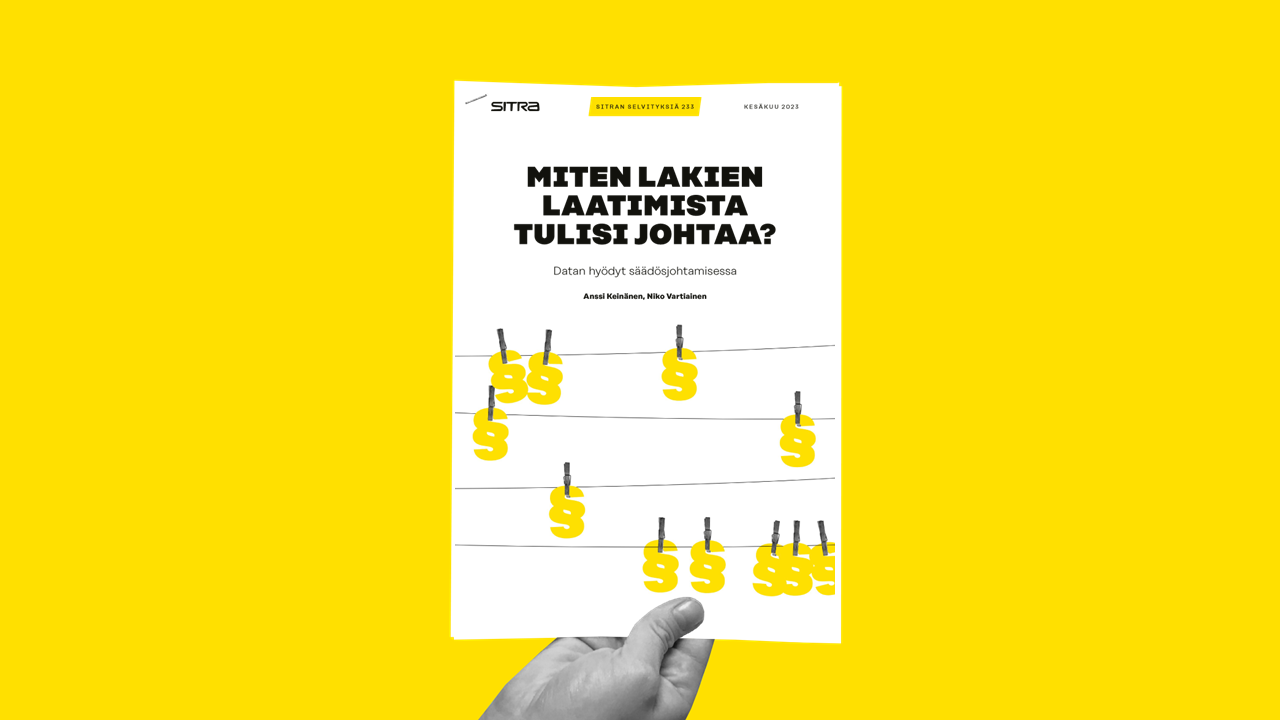Legislation is the main method of the public authorities for developing society in the desired direction. Effective legislation requires a high-quality and well-managed legislative process. Two main problems can be identified with the current legislative process: there is insufficient information available about it and no-one has the overall responsibility for its management.
More information on the legislative process is needed to assess the progress of legislative projects, improve the legislative process and enhance legislative management. More comprehensive information would increase the transparency of the process and allow for better assessment and thus bolster confidence in the legislative process and the parties participating in it.
In Finland, there are many parties involved in legislative management but none of them has overall responsibility for the process. In addition, there is currently no aggregated monitoring data available in Finland on how the legislative process functions.
Problems identified in the process, such as excessively tight schedules, scarcity of resources, siloed preparation, lack of expertise and the poor timing and lack of detail in policy guidance are regularly highlighted in reports and in public debate. A poorly managed legislative process leads to sluggish change in Finland’s legislative culture.
This study explores the stages of the legislative process. It is based on data collected by Sitra from the government’s Hankeikkuna service and open data provided by Parliament. The key finding is that there are clear shortcomings in the government’s record-keeping practices. For the main stages of drafting a government proposal, the current record-keeping practices only provide information on start of the project, the consultation round and submission of the government proposal to Parliament.
There is also incomplete information on the consultation process of many projects and information on the start of the project has not been systematically recorded in Hankeikkuna. If the various stages of the process were recorded systematically, the data could be used in statute management, for planning and aligning the schedules of legislative projects, for example.
Parliament provides reliable and systematic process data for the various stages of the legislative process. The data shows, for example, that the flow of government bills through Parliament is uneven. The most government bills are most frequently submitted to Parliament during the final year of a parliamentary term, and more are submitted in autumn than in spring.
Finland needs to strengthen data-based legislative management – the management of legislative work based on information and data. Strengthening the knowledge base requires the development of information systems, such as interfaces and reporting, enabling data connectivity and recording matters in systems as automatically and systematically as possible. Data on the legislative process collected by other parties must be combined, for example in an annual report on the legislative process. Developing legislative management requires clarification of the responsibilities of the legislative process, more rigorous assessment of the process and stronger monitoring of the implementation of responsibilities.
















Recommended
Have some more.